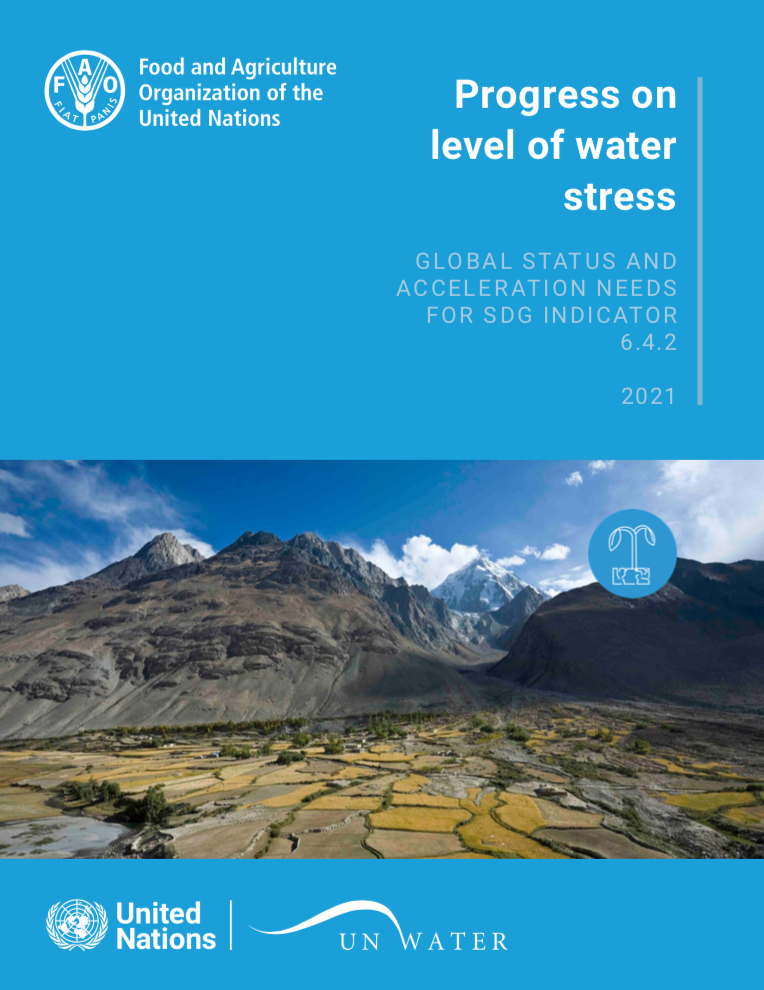Progress on Level of Water Stress – 2021 Update


Target 6.4 is: “By 2030, substantially increase water-use efficiency across all sectors and ensure sustainable withdrawals and supply of freshwater to address water scarcity and substantially reduce the number of people suffering from water scarcity.”
Indicator 6.4.2 tracks how much freshwater is being withdrawn by all economic activities, compared to the total renewable freshwater resources available. When a territory withdraws 25 per cent or more of its renewable freshwater resources it is said to be ‘water-stressed’. The monitoring of environmental water requirements encourages consideration for ecosystem health when available water resources are being allocated.
This report presents the global status on the level of water stress and acceleration needs to achieve target 6.4 by 2030, based on the latest data on indicator 6.4.2.
At the global level, 18.4 percent of the total renewable freshwater resources available were being withdrawn in 2018. Although this figure may seem safe, it hides large regional, national and subnational variations. In 2018, three out of seven regions had water stress values above 25 percent, including two subregions with high water stress (Central and Southern Asia) and one with critical water stress (Northern Africa). Western Asia has medium water stress and Eastern Asia low water stress. The rest of the regions and subregions, representing approximately 31 percent of the global population, remained at the “no stress” level, but when analysed at country- or major- basin level, important differences arise in water stress levels.
- Download Progress on Level of Water Stress – 2021 Update.
- Download an infographic introducing level of water stress.
- Explore the latest data on indicator 6.4.2, by country, region and for the whole world.
UN-Water Publications
UN-Water’s publications can be divided into two main groups: the publications that represent all Members and Partners of UN-Water – the collective products – and the publications that are under the UN-Water umbrella but produced by groups or individual UN-Water Members and/or Partners – the related products.
